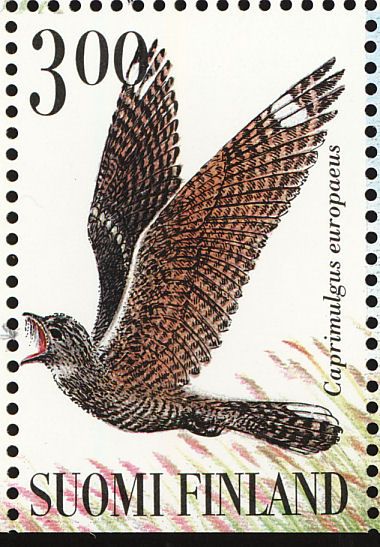"You are what you eat" is the guiding principle behind a new study comparing the diet of birds today with that of birds dead for more than a century. The results show large changes in the diets of aerial insectivores, or birds such as swallows, swifts, martins and whip-poor-wills that consume insects while in mid-flight. Today, the bulk of the birds' diet is made up of small insects at the lower end of the food web, or at a lower "trophic" level, the researchers say. "Higher up on a trophic level might be steak," said Joe Nocera, an assistant professor of forestry and environmental management at the University of New Brunswick and one of the authors of the paper. "Lower on a trophic level might be a salad. You'd have to eat a lot more salad to make up for that steak."
For example, whip-poor-wills today still have to eat insects, Nocera said, but what they have to choose from isn't as beneficial as it was 100 years ago. Joe Nocera, an assistant professor of forestry and environmental management at UNB, is an author of the paper, along with Philina English and David Green of Simon Fraser University. Using stable isotopes, or molecules found in the food eaten by birds, researchers have been able to map the changes in diet for species such as whip-poor-wills back to the 1800s.
"It's a species that used to be common in New Brunswick, but isn't anymore," Nocera said. "So we looked at Ontario populations. And we wanted to know what's driving their population declines over the past century." Nocera said most species of aerial insectivores, including swifts and swallows, have been in severe decline and he thinks it's most likely a response to declines in insect populations.
"But we don't know that," he said. "We have terrible historical records on insect abundance in history."
Large collections of dead bugs gathered over decades are nearly impossible to find, so the precise changes in the insect world can't be documented. But collections of dead birds are available.
By using museum specimens of whip-poor-wills (Antrostomus vociferus) collected as far back as the 1880s, researchers were able to determine what those birds consumed and compare their diets to birds of the same species collected this century.
Determining the diet of the birds that lived more than 130 years ago is done by examining stable isotopes, a type of biological tracer, found in the museum specimens. "When a bird, or any animal for that matter, eats something, it incorporates all the molecules of that item into its own tissues," said Nocera. "In the case of a bird, when it grows feathers it has the chemical makeup, partly, of what it's been eating." By tracking nitrogen isotopes in the birds since 1880, researchers are able to also track their food intake. "The long story short is that it has changed, and fairly dramatically, for both adults and chicks, over the past century," Nocera said.
The paper is titled "Stable Isotopes from Museum Specimens May Provide Evidence of Long-Term Change in the Trophic Ecology of a Migratory Aerial Insectivore." Written by Philina English and David Green of Simon Fraser University as well as Nocera, it was published last month in Frontiers in Ecology and Evolution.
Source: CBC News, March 14, 2018
http://www.cbc.ca/news/canada/new-brunswick/whip-poor-will-study-aerial…

- Login om te reageren
